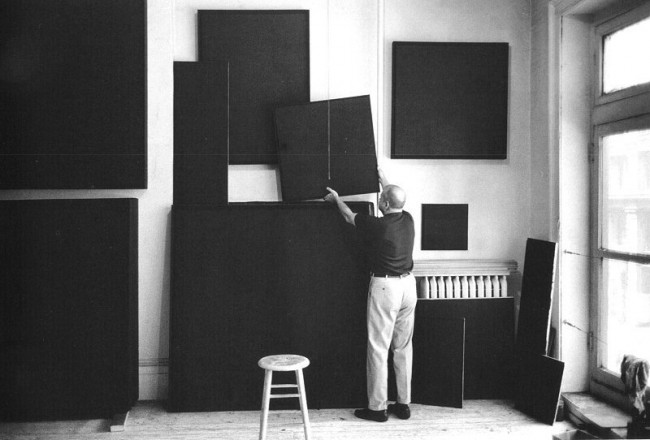Over and above the drab existence of the deeply rooted, traditional perceptions of beauty, aloof in the 60’s, emerged a surge of minimalist aesthetics, challenging society’s overall close-minded standpoint.
A growing trend, conceptually leaning on the idea that a work of art should not refer to anything other than itself. A spiritual movement, which pleads for removing appearance from its composition, reducing the target workmanship to the bare essentials.
For the first time, the mothers and fathers of the art community offered a new 3-dimensional sketch, where gestural elements were stripped away in order to reveal the core, purely visual elements. They spurred the culmination of reductivism, spotlighting the relationship between the viewer and the object, re-considering the form, through the elimination of gender distinction.
After more than 5 decades, we still hallow Malevich’s “Black Square” and Frank Stella’s “Die Fahne Hoch”, which bred the concept that real beauty conceals within the kernel, whereas the rest is just a husk, suggesting that people can’t grasp the meaning of works of art.
By bringing in anti-figurative forms, plainness and a myriad of austerity, they revealed a brand-new way of thinking and creating. One of its procreators, the sculptor Donald Judd, believed that: “art should not represent anything, it should unequivocally stand on its own and simply exist”.
As time went on, minimalism slowly scattered through every art offshoot, in the realm of design, music, fashion, architecture,etc., becoming beloved and appreciated world-wide, because it genuinely exposes the essence and “presents the divine as pure or unmediated reality”. (Kasimir Malevich).
Minimalism won the battle for stylistic supremacy in the 20th and the 21st centuries, as the sculptors focused on the monumental geometric forms, unearthing non-referential, objective works, based on harmonizing patterns, reducing the structure to its utmost simplicity, it had the aim to “distance sculpture from the process of carving, modelling or construction”. (Carl Andre).
Minimalist music outlined the timbre and rhythm, arousing in the listener the interest for the all-in all effect, not the actual notes. Fashion industry captured the mainstream, morphing it into a must-have and furnishing the picture with deconstructivism, by fashion houses like: Martin Margiela, Comme des Garcons, Helmut Lang, etc.
All those artists depicted the thought that art is nothing other than basic human nature combined with creativity and people should strive to gaze at the object as a pure object, reducing the expressive content to the bare minimum. They struggled to unveil the theory that a cluttered mind causes a lack of attention. Minimalism, once part of our everyday life, brought an enlightenment for the human brain, helping us to notice space and light first, because too much input ties one down mentally and physically.
If this art “awakening” becomes a lifestyle, it could entirely change the way we live, stopping the endless cycle of buying, buying, buying temporary indulgences we never need and shunning the dazzling jumble which gingerly brings us into a chasm of blindness and greed.
Photo Credits
Image © Kate Moss for Harper’s Bazaar
Ad Reinhardt – Fair Use
Guest Author Bio – Olea Dilan
 Fashion and art enthusiast. A versatile person interested in everything around, seeking for inspiration in every possible way. A lover of challenges and simply a lover of life. I conquer my fears by conquering my mind.
Fashion and art enthusiast. A versatile person interested in everything around, seeking for inspiration in every possible way. A lover of challenges and simply a lover of life. I conquer my fears by conquering my mind.
Blog / Website: Fox on Heels
Recent Guest Author Articles:
- How to Mix Shaker Cabinets with Open Shelving
- How Strong Business Training Translates Into Everyday Decision-Making
- New Career and Degree Paths for Educators Who Want to Make a Broader Impact
- Finding the Right Plumber in Portland: A Comprehensive Guide for Homeowners
- Why Choose Elara Caring for Jackson, MI Home Health Services?




Please Share Your Thoughts - Leave A Comment!